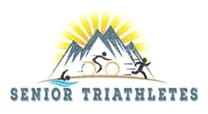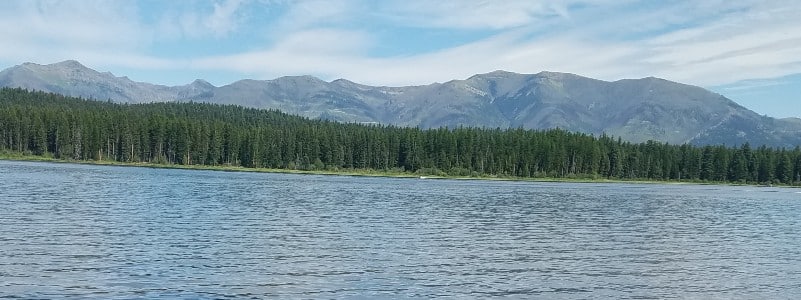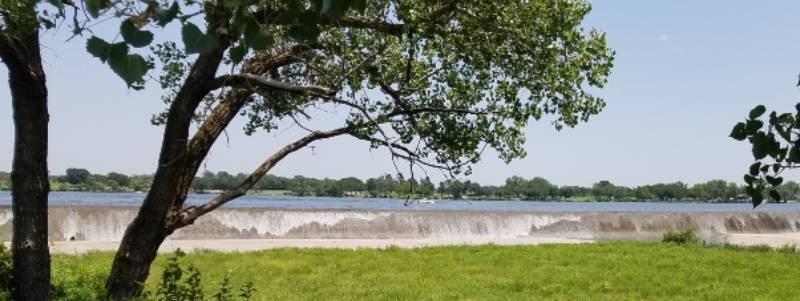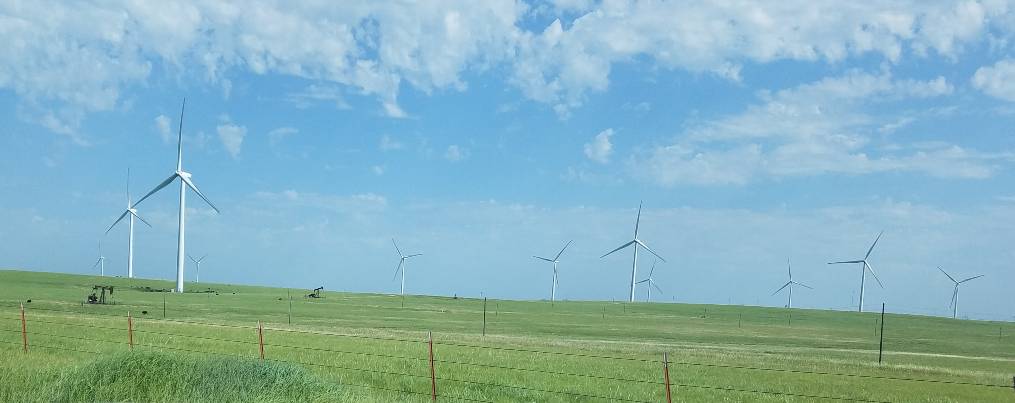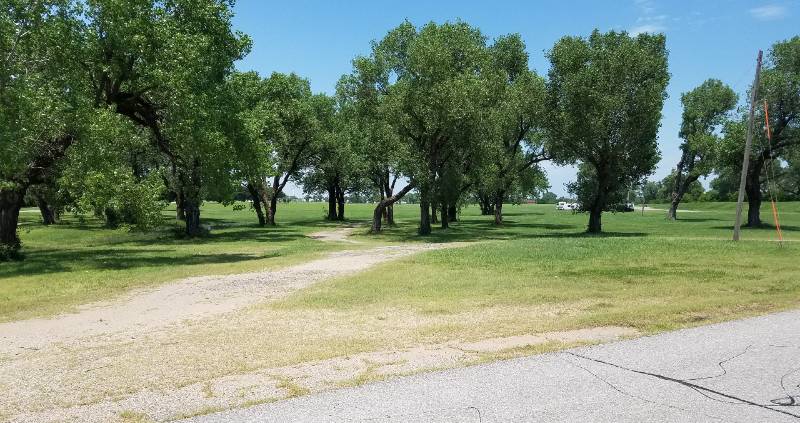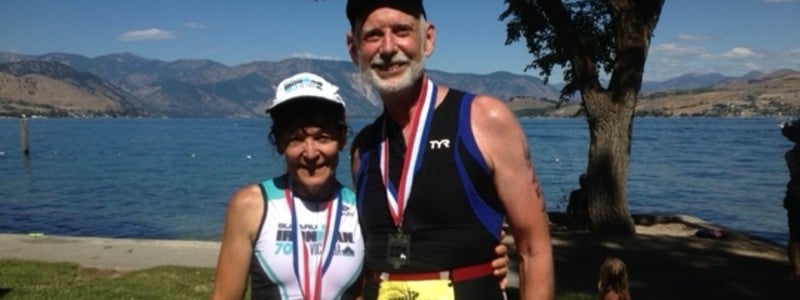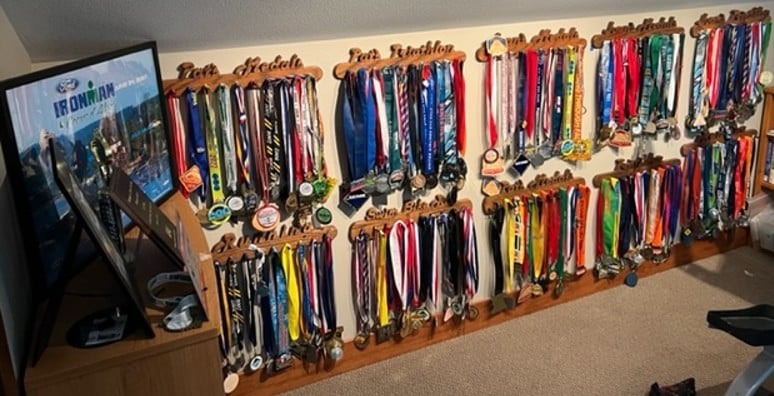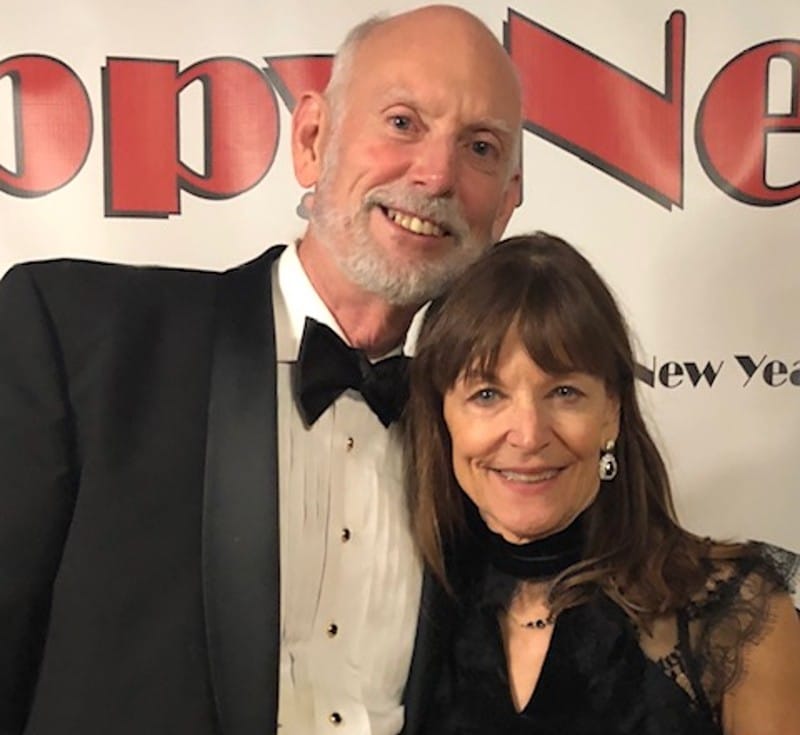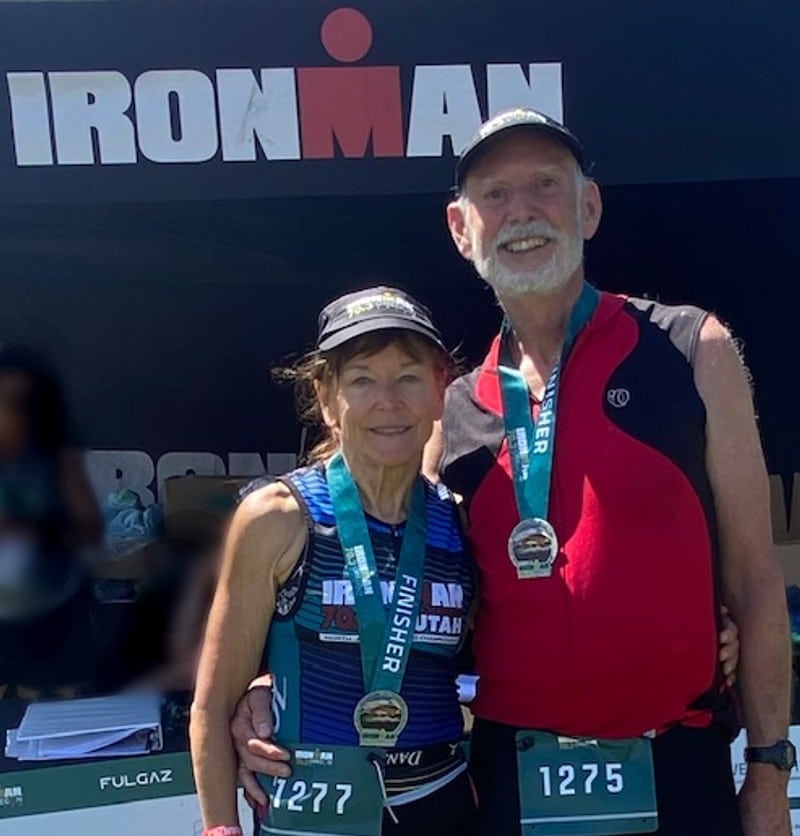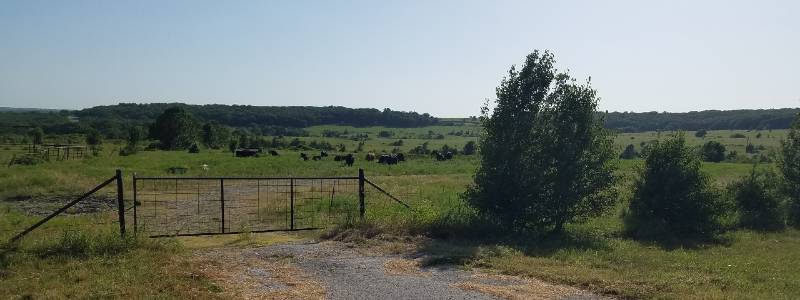Triathlon Across the USA: State #49 – Montana
Seeley Lake, Montana; August 6, 2022 – YFC Seeley Lake Challenge Triathlon/Duathlon, Riverpoint Campground Day Use Area at Seeley Lake.
Seeley Lake, the location for our Montana triathlon, is about 35 miles ‘as the crow flies’ northeast of Missoula. The race here doubled as a fundraiser for the Greater Missoula chapter of Youth for Christ (YFC).
RVing With Friends Before the Montana Triathlon
After leaving Preston, Idaho, where I had just completed our Idaho triathlon, we caravaned toward Montana. Driving our rented motorhome, Joy and I followed our friends, Steve and Lori, in their motorhome.
Over the course of the next four hours, we went from the bright green alfalfa fields around Preston to fields of grain and canola (rapeseed) with their bright yellow flowers. These eventually gave way to massive fields of potatoes with their vibrant purple flowers.
A short stretch of lava fields reminiscent of the big island of Hawaii led to more potatoes and corn. It wasn’t long before we were driving past grassy areas with grazing cattle. A little further and we were in mountains covered with thick growths of evergreens.
Besides the diversity of crops and terrain, we saw people engaged in a wide range of recreational activities. These included fly-fishing and fishing from a boat; skiing, tubing, and wake boarding; hiking; kayaking and just lazily floating down the river on a tube; swimming; and biking on roads and trails.
We passed by fields of hay and straw, grains, corn, potatoes, and evergreen trees. There were vast fields of yellow canola flower, purple potato flowers, and bright green alfalfa.
On our way to our campground outside Kalispell, from where we would make a day trip to Glacier National Park and Hungry Horse Dam, we traveled along the east side of Flathead Lake. From here, we couldn’t miss seeing the smoke cloud and occasional flames that peaked through it of the Elmo wildfire.
After two nights around Kalispell, we moved to our last stop before the Montana triathlon, Salmon Lake State Park, a few miles south of Seeley Lake.

15th Annual YFC Seeley Lake Challenge Triathlon/Duathlon
The first YFC Seeley Lake Challenge Triathlon and Duathlon was held in 2006. The first race resulted from a senior project by Holly Friede. Holly’s brother suffered from Spinal Muscular Atrophy (SMA) and she sought a way to raise money for the cure of this disease.
According to race director Cheryl Thompson, they kept the event going after this first year. Cheryl and her team have held it every year except for 2007 and 2017. In those two years, the Jocko Lakes and Rice Ridge fires forced them to cancel it.
Several Race Options for the Adults and a Kids’ Triathlon
This race included two sprint triathlon options with either a 300 yards or 600 yards swim. There was also a sprint distance duathlon (run-bike-run), and a kids’ triathlon with about 35 participants.
Organizers allowed participants in the sprint triathlon to compete as an individual or as part of a relay team.
The advertised distances for the individual legs of the sprint triathlon in which I competed were:
- Swim: 600 yards (0.34 miles or 549 m) – Actual: 725 yards (0.4 miles or 663 m)
- Bike: 10 miles (16 km) – Actual: 10.4 miles (16.7 km)
- Run: 3.3 miles (5.3 km) – Actual: 3 miles (4.8 km)
Actual distances for the swim and run are from my Garmin Forerunner 920XT. The distance of the bike leg is from my bike computer.
Getting to the Montana Triathlon Venue of Race Day
Joy and I packed up the motorhome and left the Salmon Lake State Park campground at 6:30 am. With the race starting at 9 am, we could sleep a little later.
Cheryl and her team had converted the parking lot of the Riverpoint Day Use Area into the triathlon’s transition area. Because of this, there was no parking at the race site.
Instead, they arranged for parking at Pyramid Mountain Lumber, about two miles away from the transition area. A shuttle bus transported athletes and spectators to and from the race site.
An option for athletes was for a family member or friend to drop them, their bike, and other gear at Riverpoint Campground, a few hundred yards from the triathlon’s transition area. Then, the driver, in our case, Joy, drove to the parking area back along Boy Scout Road and returned via the shuttle.
A Chilly Morning
Forty-five minutes before the start of the adult races, the air temperature was 51°F.
The combination of air temperature and 4,000 feet elevation made easy the decision to wear a wetsuit for the swim. About twenty minutes before the start of the triathlon, I put on the wetsuit and went for the customary warm-up swim to both boost my heart rate and checkout the lake bottom and water conditions.
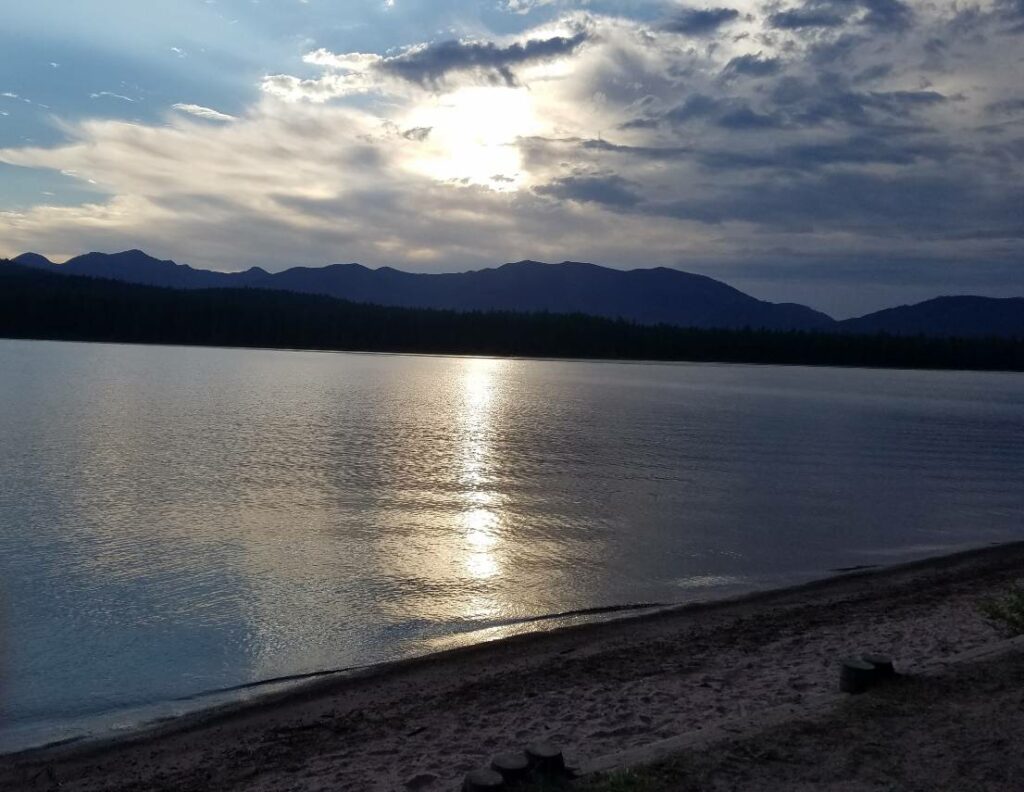
Just before the start of the race, Haley Yarborough, journalist for the Seeley Lake Pathfinder newspaper, asked to speak with me, and later Joy, about our Triathlon Across the USA story. The resulting article appeared online on August 11, 2022.
For now, you can read the story about this race and our interview with Haley here.
Swim
The triathlon began with what is called a ‘time trial start’.
Before the start of the race, participants lined up in single file within the transition area. Every five seconds, a racer was told to ‘Go’ by the person running the timing system.
When my turn came, I crossed the timing mat and jogged the roughly 50 yards along a walking trail through the woods to the water’s edge.
Before the start, I had put my goggles on. However, they quickly fogged, making it dangerous to wear them while navigating the trail and dodging its rocks and tree roots.
Instead, I kept my goggles off and dipped them into the water upon entering it. I slipped my goggles on as I waded into the water deep enough to begin my swim.
Before I knew it, I was swimming the first turn buoy.
The trapezoidal shaped swim course involved two left turns. The first leg of the course was out a little less than 200 yards toward the southeast. After a left turn, I swam about 350 yards parallel to the beach before making the second and last left turn. It was then about 220 yards back to shore and the dirt trail leading from the beach to the transition area.
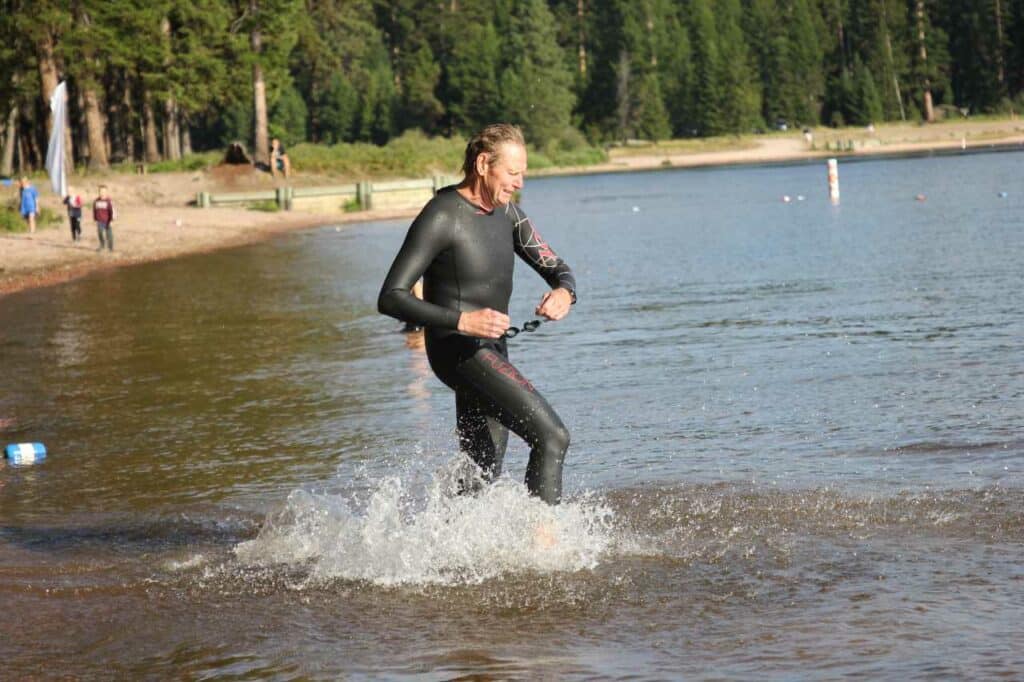
Picture used by permission of Haley Yarborough, Seeley Lake Pathfinder.
Bike
It took me a little longer than normal to get onto my bike. The sand from the beach and dirt from the trail to the transition area needed to be wiped off my feel before I put on my socks and shoes.
By now the temperature was approaching 60°F. With the sun shining and little to no breeze, I left the bike jacket in the transition area.
The bike course left the Riverpoint Campground area, turning right onto Boy Scout Road and away from the town of Seeley Lake.
Evergreen trees were on either side of us throughout most of the ride. One exception was as we crossed over the river on Boy Scout Road.
Another exception was near the bike turnaround, where there was a marshy area on both sides of the road. After turning around and heading up the hill immediately before and after the turnaround, I looked to my left to see that a horse in the pasture next to the road appeared to be racing me.
I kept pace with him, though am not sure if he was racing or just pacing me.

Run
Except for the first few hundred yards, the run was on a trail about two feet wide. There was also a short section of gravel road through the woods of the Lolo National Forest. Not used to trail running, I found the run interesting in that I needed to stay focused on the terrain with its small hills and valleys.
After about two miles, I apparently lost my focus. Passing through an area with a small depression in front of a tree root, the toe of my right shoe caught on the leading edge of the root. I stumbled forward, trying to regain my balance. However, before I knew it, I was diving left arm first into the ground.
The overall spongy surface of the ground helped by powdery silt in that area of the trail resulted in nothing more than a dime-sized scrape on my left knee and dirt on my legs, hands, and left forearm.
While finishing the run, I apparently wiped my hand across my face. After seeing me covered with dirt as I crossed the finish line, Joy ran into the transition area to see if I was injured.
Cheryl promptly evicted her from the area after I assured Joy that I was fine, just dirty.
After the Seeley Lake, Montana Triathlon
The YFC Seeley Lake Triathlon was the last of three races during this trip to the northwestern part of the USA. I had now completed triathlons in 49 states.
From here, we traveled with our friends in our respective motorhomes to Idaho Falls, Idaho, where we stayed for two nights. The next Monday afternoon, we returned the rented motorhome to its owner in Logan, Utah.
After transferring our bikes and personal items from the motorhome to our van, we started our journey back to Florida. This included a two-night stop at our son and his family’s new home in Wardsville, Missouri.
Race Firsts
- First time falling during the run.
- Starting from within the transition area was another first.
- First time racing (or was it keeping pace with?) a horse during the bike leg.
How About Trail Running?
Have you had experience running on a forest trail during a triathlon? Had you trained for it? How was it different from running on a paved course? Share your Comments below.
